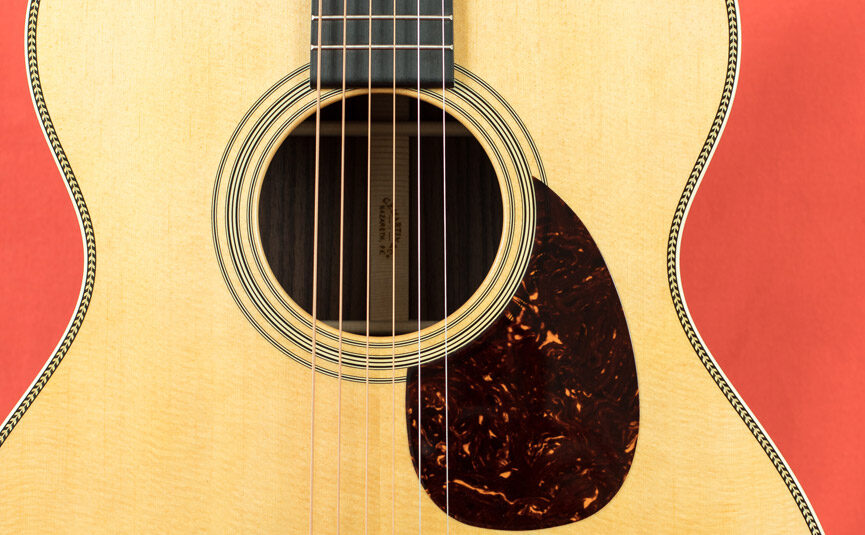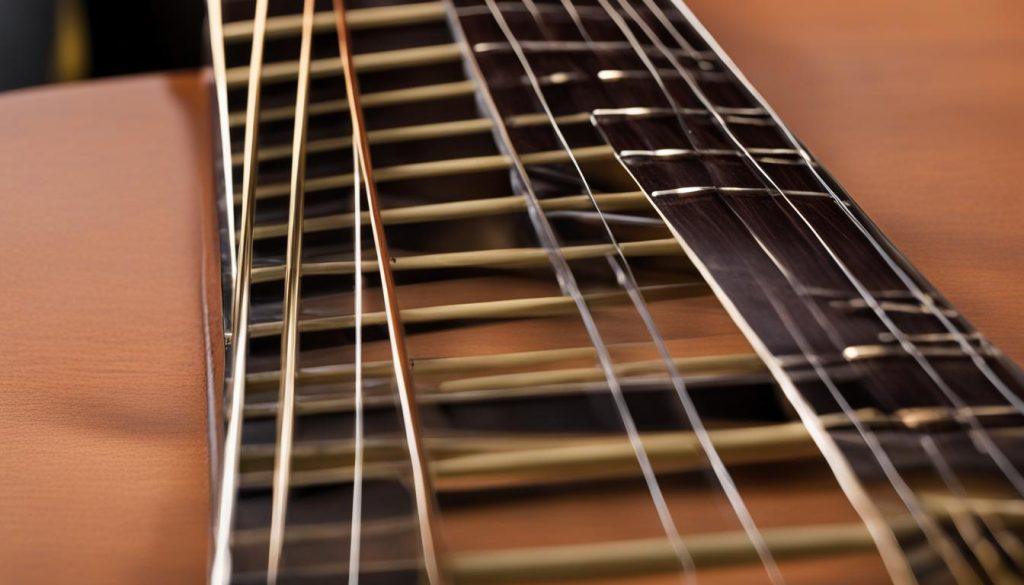Calling all guitar owners, from the seasoned rockstars to the beginners strumming their way to greatness! It’s time to grab your trusty six-string and dive into the world of expert guitar care. From dusty attic relics to prized possessions hanging on your wall, guitars of all shapes and sizes require a little TLC to keep them sounding sweet. So, buckle up and get ready to learn some must-know maintenance tips that will have your guitar thanking you in musical harmony. Let’s rock and roll, baby!
Contents
- 1 Understanding Your Guitar: Types and Materials
- 2 Daily Maintenance Routines to Prolong Your Guitar’s Life
- 3 The Significance of Humidity Control in Guitar Care
- 4 Changing Strings: Techniques for Optimal Sound and Playability
- 5 Fretboard Maintenance: Cleaning and Conditioning Tips
- 6 Expert Advice on Storing Your Guitar Safely
- 7 Troubleshooting Common Guitar Issues: Buzzes, Rattles, and More
- 8 FAQs
- 9 Rock on, Guitar Aficionados!
Understanding Your Guitar: Types and Materials
So you’ve decided to take up the guitar, huh? Well, buckle up because there’s a whole world of types and materials out there waiting for you to explore!
Let’s start with the basics – acoustic or electric? Acoustic guitars produce sound through the vibration of the strings and the hollow body, while electric guitars use pickups to convert those vibrations into electrical signals. Some folks say acoustic guitars are more “earthy” and “authentic,” while electric guitars are all about being “loud” and “flashy.” But hey, you do you!
Now, on to the materials. Guitars can be made from all sorts of things like wood, aluminum, and even carbon fiber! Each material has its own unique sound and feel, so it’s really up to your personal preference. Wood can give you a warm, rich tone, while aluminum might make you feel like a rockstar shredding on stage. And carbon fiber? Well, that’s just cool, isn’t it?
So there you have it – the world of guitars is vast and full of possibilities. Whether you’re strumming on a classic acoustic or wailing on an electric, just remember to have fun and let the music guide you!

Daily Maintenance Routines to Prolong Your Guitar’s Life
When it comes to taking care of your beloved guitar, it’s important to establish a daily maintenance routine to keep it in tip-top shape for years to come. Here are some key habits to incorporate into your daily guitar care regimen:
- **Wipe Down**: Take a soft, lint-free cloth and gently wipe down your guitar after each practice session. This will help remove any sweat, oils, or dust that may have accumulated on the body, neck, and strings.
- **Check the Tuning**: Before and after playing, make sure to check the tuning of your guitar. Tuning regularly can help prevent unnecessary strain on the neck and strings.
- **Hydrate the Fretboard**: Just like how you need to stay hydrated, so does your guitar! Use a specialized fretboard conditioner to keep the wood moisturized and prevent cracking.
By incorporating these simple habits into your daily routine, you’ll not only prolong the life of your guitar but also ensure that it sounds and plays its best every time you pick it up. Remember, a little daily TLC goes a long way when it comes to your musical companion!

The Significance of Humidity Control in Guitar Care
Imagine this: you’re strumming away on your beloved guitar, only for it to sound like a cat scratching a chalkboard. What went wrong? Chances are, humidity levels are to blame. Humidity control is crucial in guitar care, and here’s why:
- Prevents warping: Just like how a bad hair day can ruin your mood, high humidity levels can cause your guitar’s wooden body to warp. And trust me, a warped guitar is not a pretty sight.
- Avoids cracking: Low humidity, on the other hand, can make your guitar as dry as the Sahara desert, leading to unsightly cracks on its surface. Who knew dehydration wasn’t just a human problem?
So, how do you ensure your guitar stays happy and in tune? Invest in a hygrometer to monitor humidity levels in your guitar case or room. Remember, a happy guitar means happy jam sessions – and isn’t that what we all want?

Changing Strings: Techniques for Optimal Sound and Playability
So you’ve decided it’s finally time to change those crusty old strings on your guitar, huh? Well, good news – we’ve got some tips and tricks to help you get the optimal sound and playability out of your instrument!
First things first, make sure you have all the necessary tools on hand before you start the process. You’ll need a fresh set of strings, a string winder (unless you want to spend hours twisting those babies by hand), and a tuner to ensure your guitar is in tune once you’re done.
Next, when removing the old strings, make sure to do it one at a time to avoid any unwanted tension changes on the neck. **Guitar strings are like delicate little noodles**, and you don’t want to risk damaging your instrument by taking them all off at once.
Once you’ve got the old strings off, it’s time to put on the new ones. **Make sure to stretch out each string gently** before tuning up to prevent any pesky tuning stability issues down the road. And don’t forget to give each string a little tug once it’s tuned up to make sure it’s secure and won’t break mid-jam session!

Fretboard Maintenance: Cleaning and Conditioning Tips
Alright, fellow guitar enthusiasts, it’s time to talk about everyone’s favorite topic – fretboard maintenance! Whether you’re a seasoned pro or just starting out, keeping your fretboard clean and conditioned is crucial for maintaining your instrument’s playability and longevity. So grab your favorite cleaning products and let’s get to work!
First things first, let’s talk cleaning. **Dust and grime** can build up on your fretboard over time, affecting both the sound and feel of your playing. To combat this, grab a soft cloth or a specially designed fretboard cleaning tool. Gently wipe down the fretboard, being careful not to press too hard or use harsh chemicals that could damage the wood. If you’re feeling extra fancy, you can even use a mild soap solution for a deeper clean.
Once your fretboard is squeaky clean, it’s time to show it some love with a good conditioning treatment. **Fretboard oil** is your best friend here – it helps to keep the wood hydrated and prevent it from drying out and cracking. Apply a small amount to a clean cloth and rub it into the wood, focusing on the areas where your fingers make the most contact. Let it soak in for a few minutes, then wipe off any excess oil. Your fretboard will thank you with improved playability and a shiny, happy glow!
And there you have it, folks – with just a little bit of elbow grease and TLC, your fretboard will be looking and feeling better than ever. So grab your cleaning supplies, put on your favorite tunes, and show your fretboard some well-deserved attention. Your guitar will thank you with smooth, buttery playability and a sound that’s sure to impress. Rock on!
Expert Advice on Storing Your Guitar Safely
So you’ve finally decided to take your guitar storage game to the next level. Congrats! Now, let’s dive into some expert advice on how to keep your precious instrument safe and sound:
First things first, invest in a quality guitar case. Not only will it protect your guitar from dust and dirt, but it will also cushion it from any accidental bumps and knocks. Plus, it’s like a cozy little home for your six-stringed friend.
Next, consider the temperature and humidity levels in the room where you plan to store your guitar. Extreme conditions can wreak havoc on your instrument, so be sure to keep it in a cool, dry place away from direct sunlight and moisture. Remember, guitars are like delicate divas – they need the perfect environment to thrive.
Lastly, don’t forget to regularly clean and maintain your guitar. Give it a gentle wipe-down with a soft cloth and some guitar polish to keep it looking shiny and new. And hey, maybe even serenade it with a little tune every now and then – after all, a happy guitar is a well-played guitar!
Troubleshooting Common Guitar Issues: Buzzes, Rattles, and More
So, you’ve picked up your trusty guitar, strummed a chord, and noticed a strange buzzing sound coming from your instrument. Don’t fret (pun intended), we’ve got you covered with some common guitar issues and how to troubleshoot them!
Buzzes and rattles: If you’re hearing a buzzing noise when you play certain notes or chords, it could be caused by a variety of factors. Check the following:
- Loose hardware like tuners, strap buttons, or screws
- Worn-out frets that need to be leveled or replaced
- Improperly set up bridge or saddle
String issues: Are your strings constantly going out of tune or breaking? It’s time to investigate the following:
- Check for sharp edges on the nut or saddle that may be cutting your strings
- Make sure your strings are properly stretched and wound onto the tuning pegs
- Consider upgrading to a higher quality set of strings
Electronics problems: If you’re experiencing static, crackling, or intermittent sound from your pickups or controls, try the following:
- Inspect for loose wiring connections inside the control cavity or pickup cavities
- Clean your pots and switches with contact cleaner to remove any dirt or grime
- If all else fails, it may be time to replace your pickups or wiring entirely
FAQs
Why is it important to properly maintain your guitar?
Well, you wouldn’t neglect your pet fish, so why neglect your precious six-string? Proper maintenance ensures your guitar sounds sweet, stays in tune, and doesn’t start growing mold. Plus, you don’t want your guitar judging you for being lazy.
How often should I change my guitar strings?
Think of changing your strings like changing your underwear – it’s not fun, but it’s necessary for hygiene. Depending on how much you play, aim to change your strings every 1-3 months. Trust us, your guitar will thank you.
What’s the best way to clean my guitar?
Grab a cloth and some guitar polish, or even just a damp cloth if you’re feeling lazy. Gently wipe down the body and neck of your guitar to remove any grime or sweat. Remember, cleanliness is next to guitar godliness!
How can I prevent my guitar’s neck from warping?
Keep your guitar stored in a humidified environment to prevent wood from shrinking or expanding. You can also invest in a guitar neck support to keep it straighter than your ex after a bottle of wine.
What should I do if my guitar’s intonation is off?
Intonation is like trying to get your friends to agree on pizza toppings – sometimes it’s a struggle. To fix it, adjust the saddle position on your bridge until each note is in tune all the way up the neck. It’s a bit of trial and error, but eventually, you’ll find harmony.
Rock on, Guitar Aficionados!
In a world where guitars are cherished more than significant others, it’s crucial to give your six-stringed companion the love and care it deserves. By following these expert maintenance tips, you’ll be well on your way to shredding like a rock god for years to come. Just remember, a little TLC goes a long way when it comes to your beloved instrument. Keep strumming and rocking on!



